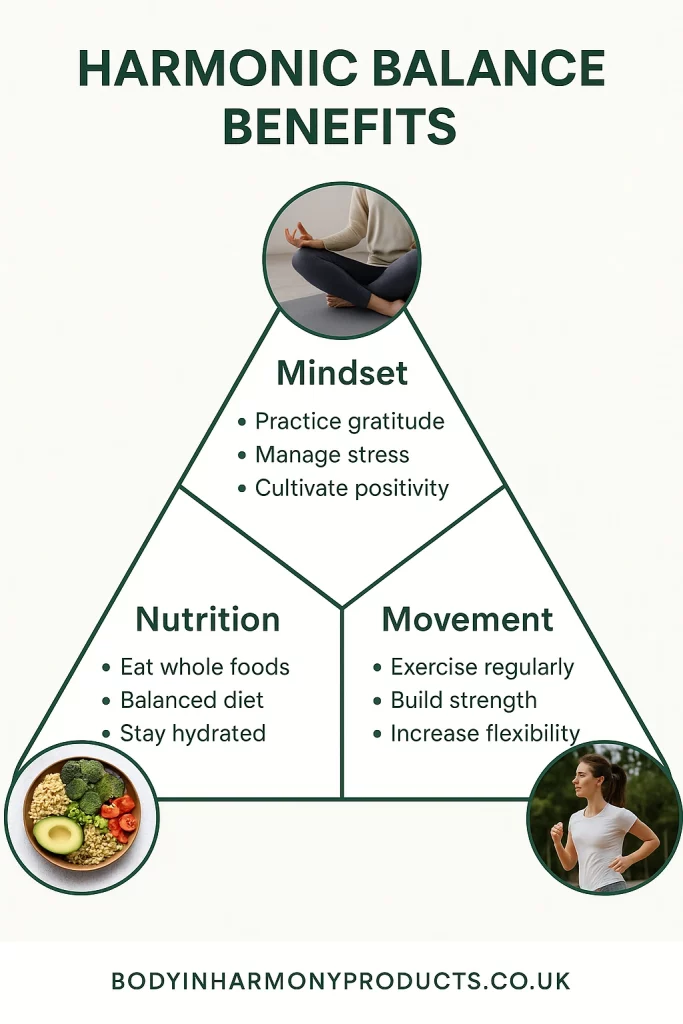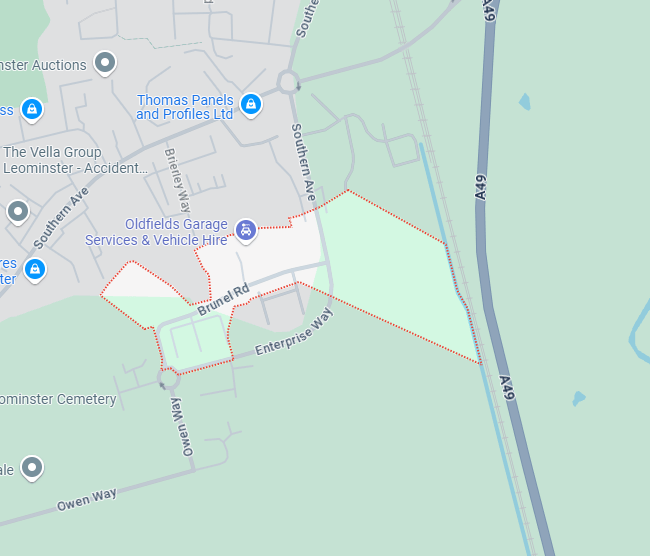The Triangle of Mindset, Nutrition, and Movement
Understanding the harmonic balance benefits of aligning mindset, nutrition, and movement can transform how you feel every day. When all three work together, your energy steadies, focus improves, and stress levels drop. This balance forms what many call the “triangle of harmony” — a simple yet powerful way to maintain physical and mental health. The idea is to strengthen each side of the triangle equally, supporting the others in return. Research shows
Harmonic balance benefits in everyday life
The body and mind constantly communicate. When stress rises, digestion slows. When nutrition falters, energy and motivation suffer. Movement, meanwhile, connects both systems by improving circulation and releasing endorphins. That’s why the harmonic balance benefits of combining these elements are so effective. You don’t need extreme diets or long workouts; steady habits deliver consistent results.
Mindset anchors every decision you make. Thought patterns influence behaviour, so daily mental clarity matters. Short breathing sessions or simple journalling lower stress and sharpen focus. Nutrition then fuels the body, stabilising blood sugar and mood. Hydration supports brain performance, while colourful foods provide essential micronutrients. Movement completes the connection. Regular walks, stretching, or resistance exercise build strength and lift mood naturally. Over time, each element supports the others, keeping you grounded and energised. Daily Well Being: Simple Habits for Everyday Health
Harmonic balance benefits from the three pillars
Mindset – directing focus and calm
Start each morning with a small mental reset. A few deep breaths or one minute of stillness reduces tension. Because calm focus drives good decisions, this step matters more than many realise. Add short pauses during the day — breathe, drop your shoulders, and exhale fully. This simple rhythm interrupts stress before it builds. At night, reflect on a few positive actions from the day. Over time, you’ll notice clearer thinking and greater emotional stability, two of the most rewarding harmonic balance benefits.
Nutrition – the body’s natural fuel
What you eat affects both physical and mental performance. Whole foods deliver energy steadily and help balance hormones. Include vegetables, lean proteins, healthy fats, and natural fibre. Drink water throughout the day; even mild dehydration can reduce focus. Preparing meals in advance makes healthy eating easier. Choose real foods most of the time, but enjoy small treats mindfully — balance, not restriction, keeps habits sustainable. This is one of the lesser-known harmonic balance benefits: freedom without guilt, powered by awareness.
Movement – creating energy and strength
Daily movement maintains flow throughout the body. A brisk walk, cycle, or yoga session releases endorphins and improves sleep. Strength training builds muscle and stability, while stretching enhances mobility. Consistency matters more than intensity. Just fifteen minutes of exercise can produce measurable change. Regular movement is one of the key harmonic balance benefits because it ties mental clarity to physical vitality.
Harmonic balance benefits: practical integration
To make balance practical, use simple anchors. Morning: hydrate and stretch. Midday: walk and eat slowly. Evening: unwind with gentle mobility and dim light. Add one healthy meal, one mindful pause, and one active break daily. Each small step compounds into progress. This structure makes wellbeing manageable instead of overwhelming.
The triangle works best when flexible. Missed a workout? Focus on nutrition and mindfulness. Ate off-plan? Go for a walk and hydrate. This adaptability is another powerful harmonic balance benefit because it prevents guilt and burnout. Balance adjusts; it never collapses.
Harmonic balance benefits in action
Once your routine stabilises, focus on four ongoing anchors:
-
Sleep before stimulation: keep a steady bedtime and avoid screens late at night.
-
Design your environment: place fruit within sight and trainers near the door.
-
Track leading actions: count vegetables, steps, and bedtime consistency.
-
Prioritise recovery: stretch lightly and breathe through stress to release tension.
Within two weeks, early harmonic balance benefits appear: improved focus, fewer energy dips, and steadier moods. After a month, you may sleep more deeply and recover faster. With regular practice, long-term harmonic balance benefits include stronger immunity, sharper thinking, and emotional resilience.
If energy dips mid-afternoon, move lunch earlier and include protein. When sleep feels shallow, lower caffeine after noon and reduce evening light. For joint discomfort, shorten workouts and add flexibility training. When cravings rise, drink water and include healthy fats. Each adjustment restores equilibrium.
Keep mindset cues nearby. Ask, “What’s my next best step?” or “How can I simplify this?” These gentle prompts help you stay consistent. Celebrate small wins — a walk, a balanced meal, or an early night. Every action strengthens rhythm, which is the true measure of wellbeing.
Living with balance is not about perfection; it’s about maintaining steady harmony between thought, food, and movement. The triangle framework keeps your body and mind working together in natural alignment, producing sustainable health — the real essence of the harmonic balance benefits.





